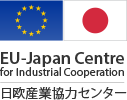

Kansai is an area that is located in the centre of Japan and has a huge market with a population of approximately 21.8 million and a Gross Regional Product of approximately $1,022 billion. The size of the economy is equivalent to that of South Korea (ranked 15th in the world). Kansai has international cities, such as Osaka, Kyoto and Kobe.
Kansai is one of the largest hubs for the development and production of energy-related industries such as lithium-ion batteries.
A large number of pharmaceutical company headquarters, foreign companies and medical equipment manufacturers are clustered in Kansai, where the world’s first therapeutic agent developed as a result of clinical research that applied iPS cells.
U.S. and European companies comprise the largest portion of foreign-affiliated companies in Kansai. Top represented countries (2014) include: Germany (16.7%), Italy (6%), France (5.6%) and Greece (4.7%).
Kansai accounts for around 16% of Japan's total GDP.
Long-established industries: manufacturing industries, steel, transportation equipment, machinery, electronic products, chemicals, pharmaceutical products. Growing industries: medical and biotech industry.
Long-established industries: automotive-related, electrical equipment, devices, chemicals, new energy. Emerging industries: biotechnology.
Long-established industries: high-tech and IT-related industries, chemical products, transportation and communication industries, traditional craft industries, ceramics, textiles, agriculture, fisheries, forestry. Emerging industries: nanotechnology and material production, biotechnology, environmental friendly-related industries, analytical equipment, solar batteries.
Long-established industries: metal products, general machinery, plastics, electrical machinery and equipment, pulp and paper, food products. Emerging industries: environmental technologies, new energy-related industries, biotechnology, medical technology.
Long-established industries: agriculture, forestry, fisheries, food, handicraft, textile products, transportation machinery and equipment, electronic components, chemical and pharmaceutical industries. Growing industries: semiconductors, liquid crystal industry.
Long-established industries: electronic components, devices, office machinery and furniture manufacture, food processing.
Long-established industries: petroleum, chemicals, steel, machinery and food industries.
Further Readings:
Sources
Picture: Kinkakuji Shrine in Kyoto, Kyoto Prefecture
Picture copyright: EU-Japan Centre for Industrial Cooperation
The EU-Japan Centre currently produces 5 newsletters :









